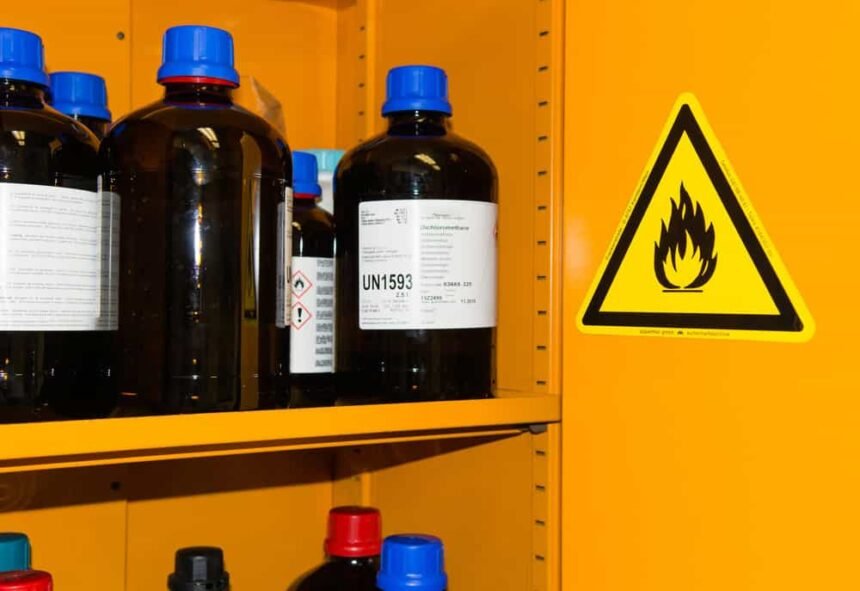Workshop environments are specialised zones where production, repairs and innovation take place. However, these activities often involve the handling of substances that can pose risks to both personnel and premises if not managed correctly. Among the strategies implemented to safeguard workshops, the utilisation of dg cabinets is a critical element in ensuring a safe and compliant workspace.
The significance of workshop safety cannot be overstated. It is a multifaceted issue that encompasses the wellbeing of workers, the protection of the environment, and the preservation of assets and business continuity. The risks inherent in workshops, particularly those handling hazardous substances, necessitate a proactive approach to safety measures, which includes the proper storage of dangerous goods (DG).
The Role of DG Cabinets in Workshop Safety
DG cabinets serve as the first line of defence against potential incidents arising from mishandling or accidental spillage of hazardous materials. By meeting strict storage regulations, these cabinets help in reducing fire risks, chemical spills and vapour releases, which could lead to health hazards or catastrophic events. Their design, construction and placement within the workshop are central to maximising safety.
At the core of a DG cabinet’s functionality is its ability to contain and isolate dangerous substances. This ensures that, in the event of a leak or spill within the cabinet, the contents do not come into contact with incompatible materials. It also restricts access to authorised personnel only, reducing the likelihood of inexperienced individuals handling dangerous goods incorrectly.
Key Features of High-Quality DG Cabinets
A well-designed DG cabinet should feature robust construction materials capable of withstanding fire for a certain period, thus providing a critical window for evacuation and emergency response. Metal cabinets with corrosion-resistant paint, self-closing, latched doors and proper ventilation are staples in ensuring that these storage solutions meet industry standards.
Another fundamental feature is the presence of spill containment sumps. These are built-in basins at the bottom of the cabinet designed to capture and contain any leaked substances. The capacity of these sumps is often regulated and must be sufficient to hold a significant volume of the stored substances.
Labelling and signage are also vital characteristics of an effective DG cabinet. Clear, visible markings indicating the nature of the contents and the hazards they present are crucial for proper identification and risk assessment. This transparency is necessary not only for the workshop staff but also for first responders in emergency situations.
Selection and Placement of DG Cabinets
The successful implementation of DG cabinets within a workshop setup involves careful consideration of the specific dangerous goods being stored. There are different types of cabinets tailored to various classes of chemicals and substances. For instance, flammables, corrosives, toxics, and oxidising agents each require cabinets with particular features to safely contain them.
The right placement of DG cabinets is just as important as their selection. They should be situated away from ignition sources, in areas with minimal traffic, and in locations where temperature fluctuations are minimal. Adequate signage and clear walkways must also support their placement to ensure easy access for authorised personnel and emergency responders.
Training and proper use of PPE (personal protective equipment) when handling substances within DG cabinets are also vital aspects of the safe management of hazardous materials. Workers must be equipped with the knowledge of how to correctly store, retrieve, and handle the contents of these cabinets.
Compliance and Certifications
Adherence to legal requirements and industry standards is non-negotiable when it comes to the use of DG cabinets. There are stringent regulations in place to guarantee the safety of workshops and the broader community, and these often include specific certifications for DG storage solutions.
Workshop managers must ensure that the DG cabinets in use comply with the relevant national and international standards. These compliance measures not only safeguard the workshop from legal repercussions but more importantly, they enhance the overall safety and well-being of those within the vicinity.
Regularly scheduled inspections and maintenance of DG cabinets are another aspect of ensuring ongoing compliance. Wear and tear, corrosion, or seal degradation can compromise the integrity of the storage solution. Hence, routine checks are imperative to maintain safety and operational standards.
Conclusion
Maximising workshop safety encompasses various procedures and equipment. Among these, the implementation of DG cabinets stands out as an essential strategy. The careful selection, proper use, and rigorous maintenance of these cabinets are indispensable to creating a resilient and secure workshop environment. By minimising risks associated with the storage of dangerous goods, DG cabinets play a pivotal role in protecting lives, property, and the environment, ensuring the sustainability of workshop operations.
Ensuring that workshops remain safe and productive necessitates attention to detail, unwavering commitment to best practices, and a robust safety culture that permeates every aspect of the operations. The deployment of high-quality dg cabinets, collaboration among staff, and adherence to regulations form the bedrock of a secure and efficient workplace that prioritises the safety of everyone involved.








